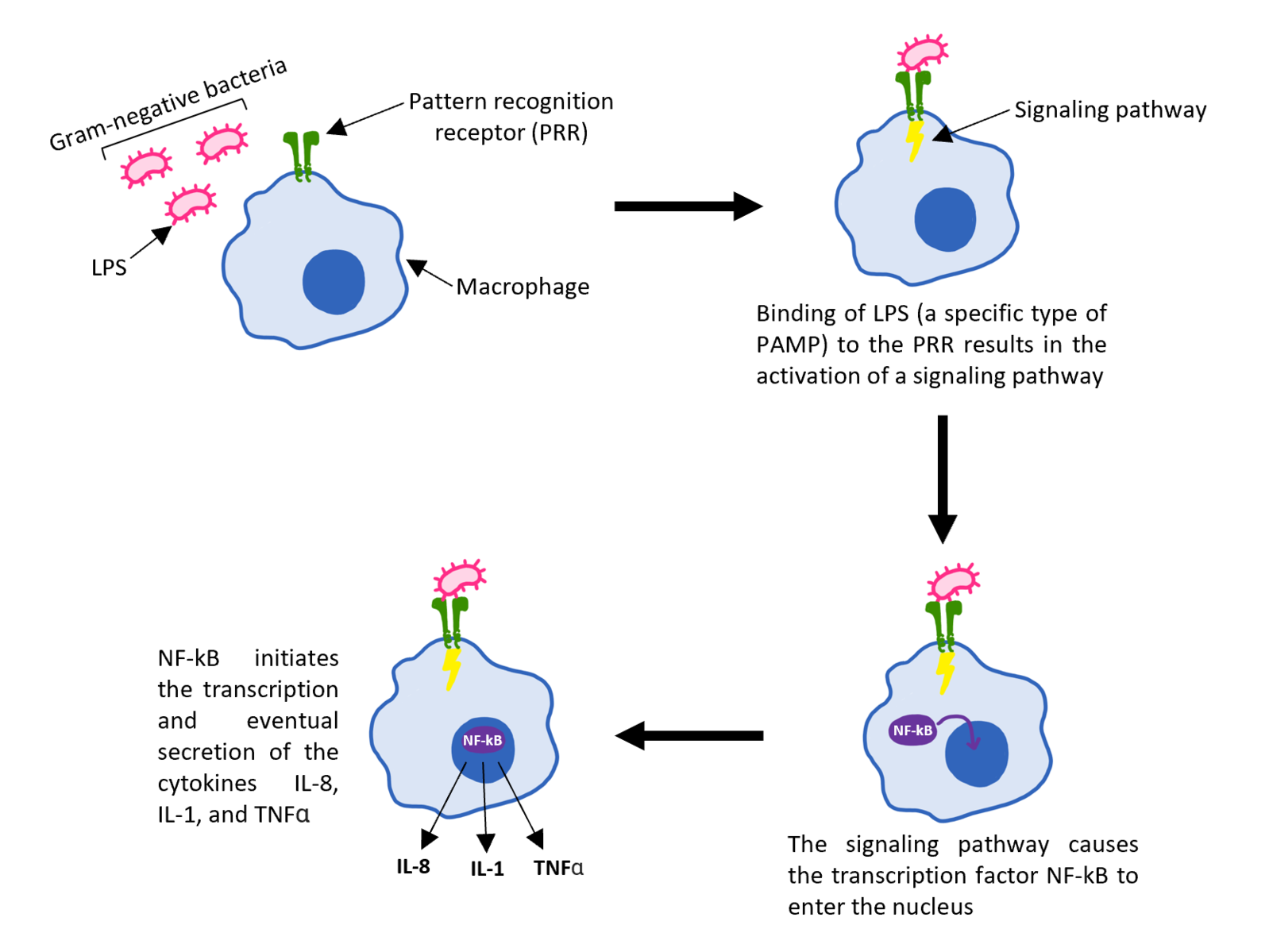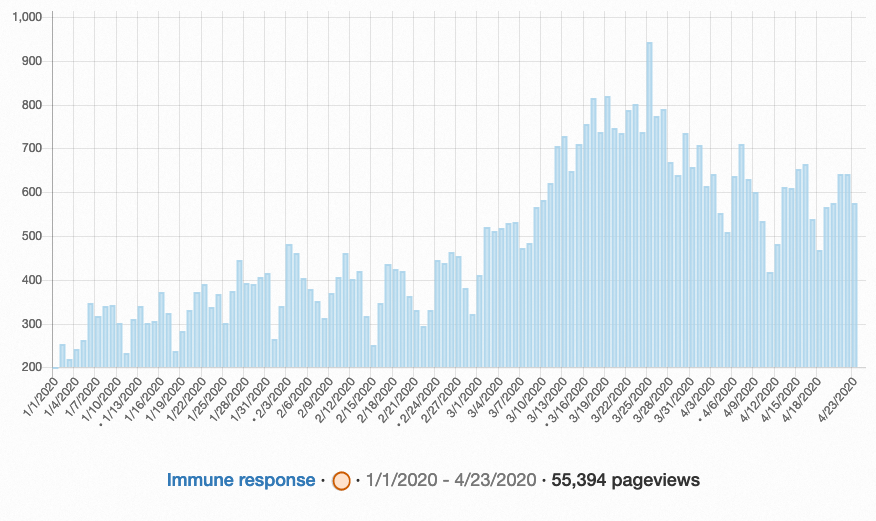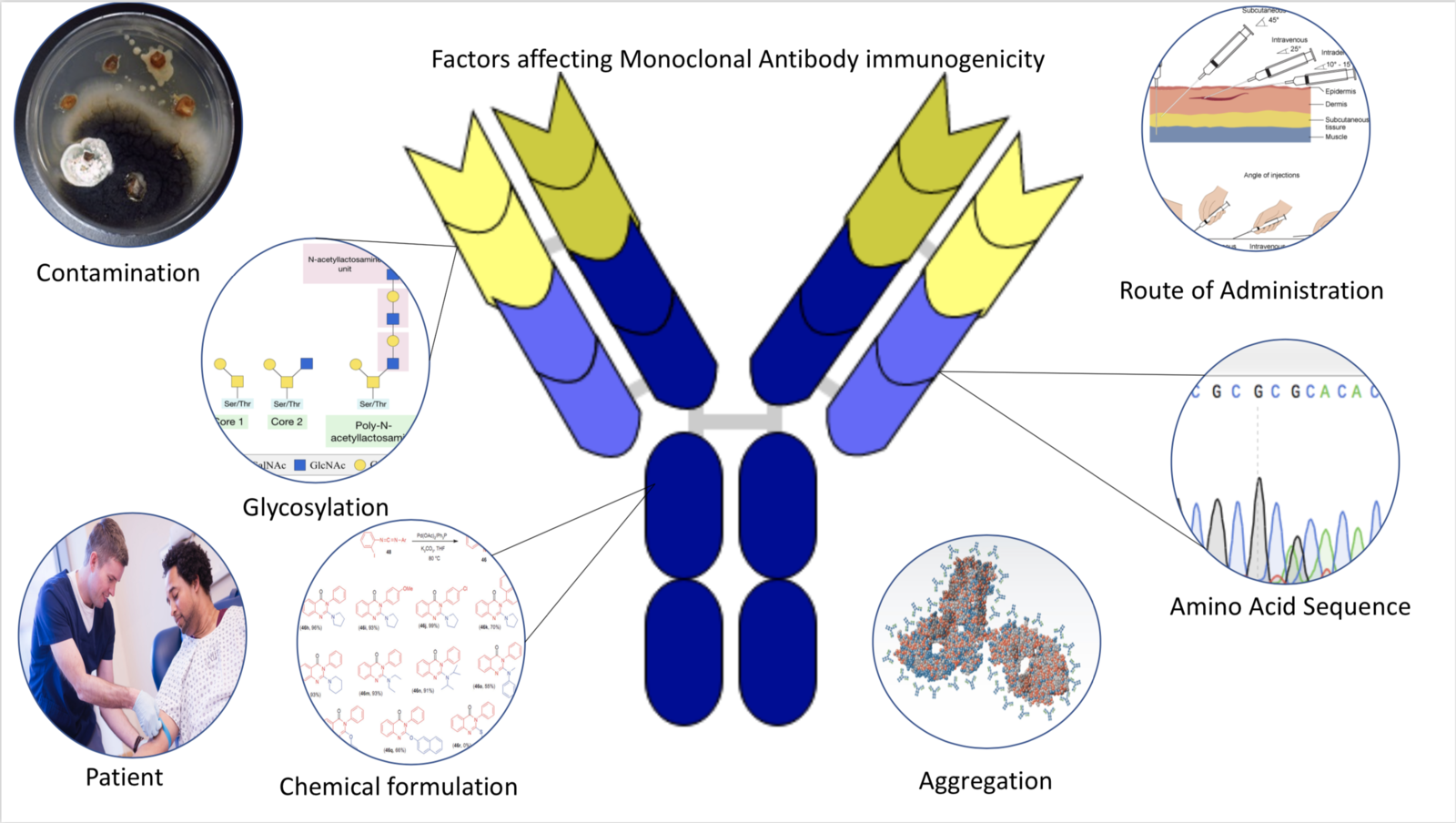The immune system is complex and fascinating. Cells of our immune system encounter and destroy bacteria and viruses daily, most often without our even being aware of their presence.
So begins the description for Dr. Debby Walser-Kuntz’s immunology course at Carleton College this spring. After looking into components of vertebrate immune systems and how cells produce immune responses to foreign invaders, students were ready to examine the role of the immune system in infectious disease, allergy and asthma, autoimmunity, vaccination, obesity, and immunotherapy. And as a final project, they would become public scholars as they put what they learned on Wikipedia.
Quite a few of the articles that these students created and improved in the beginning of March attracted many more pageviews than usual by the end of the month, likely due to the increase in Wikipedia’s web traffic as readers sought to understand the unfolding coronavirus pandemic. With their access to academic sources and guidance from their expert instructor, students can help play an important role in answering the public’s immediate questions.
One of Dr. Walser-Kuntz’s students is responsible for nearly all of the current content in the article about immune response. They even uploaded a diagram they created to describe an innate immune response to a bacteria invasion.

The article has received 46,650 pageviews since the student made changes. There was a dramatic upswing in readership in March, likely as regions increasingly reacted to the COVID-19 pandemic and readers sought to understand how their bodies might respond to the virus.

Another student uploaded a diagram they made to the article about immunogenicity, “the ability of a foreign substance, such as an antigen, to provoke an immune response in the body.” The diagram explains the different factors that affect immunogenicity, including glycosylation (a chemical reaction between molecules), how the antibodies are administered to the patient, and more.

The page reaches an average of 180 readers per day. Now those readers will read the content that the student added, which accounts for nearly the entire page. The student also included an abundance of new references, responding to a warning template that had been placed on the article in 2013 alerting readers that there weren’t enough references.

A Wikipedia writing assignment presents a unique opportunity to translate scientific concepts in a place where people around the world are looking for answers. Students are great performers of this work, since they remember what it was like learning about these concepts for the first time.
Adding scientific content to Wikipedia, especially when it relates to medicine and health, can be complicated. Our trainings for students aim to prepare them to follow the sourcing and quality requirements that the Wikipedia volunteer community has built. With the guidance of their instructor, students can do some amazing work that lives on well beyond the classroom.
Interested in incorporating a Wikipedia writing assignment into a future course? Visit teach.wikiedu.org for all you need to know to get started.
